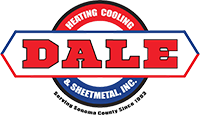If you or someone in your family suffers from asthma, allergies or other upper respiratory issues, you know how important it is to keep your home clean and as free as possible of allergens and asthma-triggering irritants.
Follow these home cleaning tips to make breathing a little easier.
Asthma and Allergy Triggers
Unfortunately, most of the worst triggers for those suffering from upper respiratory issues are found in our homes every day. Common triggers include:
Dust and Dust Mites
The reason asthma sufferers get triggered by dust is because of the things that form dust. Dust is a combination of dead skin cells, hair, bacteria, decomposing bugs and insects, soil, pollen, outdoor pollutants, dust mite droppings, plus microplastics and fabric particles.
Gathered together, it forms dust and goes to work settling on everything from your furniture, carpeting, mattresses, curtains, shelves, tables, pictures and decorations.
Dust mites are microscopic pests that feed on the dead skin cells shed by you and your pets and hang out in all kinds of dusty spaces. Someone suffering from breathing disorders may be triggered into an allergic reaction by their undetected droppings.
Dander
Dead skin flakes shed directly from the body of any animal (not just cats) with hair or fur produces dander. Dander easily becomes airborne and circulates throughout the home. The trigger for dander is when your immune system identifies it as a danger and responds with an allergic reaction.
Pollen
Pollen, another big problem for allergy sufferers and asthmatics, is a fine airborne powder produced by seed-bearing plants during reproduction, or pollination. When pollen becomes airborne, the immune system kicks in by producing histamines to fight off what it perceives to be a threat, or allergen. The immune system causes your body to experience an allergic reaction.
In addition to these allergy/asthma triggers, there are so many more:
- Pets
- Pests
- Mold
- Air Pollution
- Tobacco Smoke
- Cleaners/Disinfectants
It’s the combination of any or all of these things that bring on breathing problems. It’s only by staying on top of your home cleaning that keep these triggers under control.
Home Cleaning Strategies
If your home isn’t properly cleaned and disinfected, more allergens can become airborne, spread and actually make symptoms worse. For the best results, avoid harsh cleaning products and cleaning tools that release airborne allergens.
Use this simple three-step process to clean, disinfect and sanitize your home:
Clean to remove dirt, grime and bacteria from surfaces, floors and furniture. Note that overall cleaning is extremely effective by using basic soap and water before moving on to the disinfecting and sanitizing stages.
Disinfect to kill germs.
Sanitize to reduce the number of germs.
Here are some other cleaning tips:
- Wear gloves and a mask to protect skin and lungs from potential allergens while cleaning.
- Use a damp or asthma-certified cloth for dusting; avoid feather dusters and dry mops.
- Choose unscented gel or liquid cleaners instead of aerosol or spray cleaners.
- Wash throw rugs and bedding in hot water at least once a week.
- Vacuum at least once per week with a HEPA allergen-trapping filter.
- Some cleaning and disinfecting products may trigger allergic reactions. To reduce this risk, avoid cleaning products containing harsh chemicals, are strongly scented or contain volatile organic compounds (VOCs).
- Experiment with gentle, natural or homemade disinfecting recipes to help reduce allergic reactions. These recipes may contain ingredients such as vinegar, dish soap, peroxide, or baking soda.
- Stay away from essential oils as the strong scents can potentially trigger an asthma attack or release harmful VOCs.
- Close windows and opt for air conditioning (not fans which scatter dust) to circulate air while cleaning.
Reducing Allergens in the Home
Here are more tips for decreasing the number of asthma-triggering allergens in your home:
- Eliminate excessive clutter that collects dust.
- Replace carpet with tile, vinyl or wood flooring in as many rooms as possible.
- Protect mattresses and pillows with zippered allergen eliminating covers.
- Bathe pets as often as possible and keep them restricted to certain areas of the house, off furniture and out of the bedrooms.
- Use the bathroom exhaust fan during and after showering to keep the room dry and reduce mold growth; dry and disinfect shower curtains.
- Fix leaks and keep moist, humid areas around the home as dry as possible.
- To prohibit mold growth, run a dehumidifier in humid areas to keep the space dry.
Conclusion
By following these cleaning tips, you’ll be able to reduce the level of irritating allergens in your home.
For even better air quality in your Sonoma County home, call in the HVAC specialists at Dale HCS. We can recommend products and services to not only reduce allergens but help improve air circulation and the overall air quality in your home.

